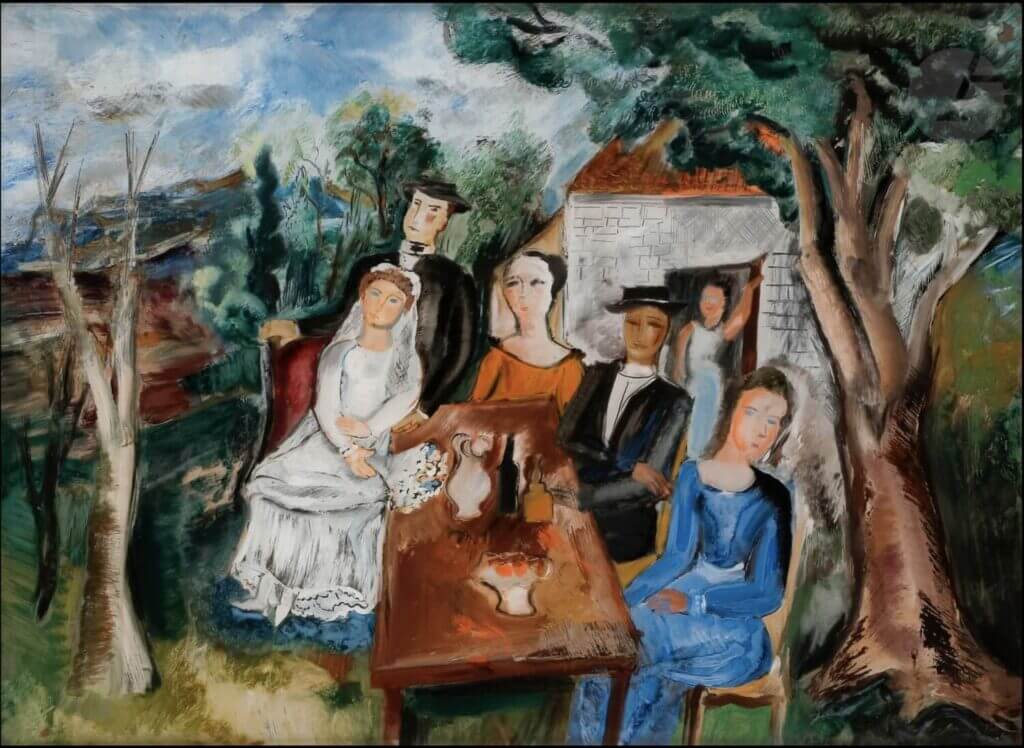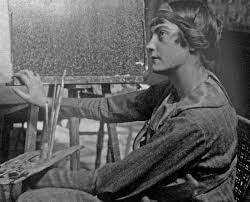Your currently viewing RAW Modern | Switch to RAW Contemporary
La Noce, 1925
Catalogue essay by Blanche Llewellyn
Valentine Prax and her husband Ossip Zadkine first crossed paths in the picturesque surroundings of Bruniquel, ultimately settling in the village of Caylus, where they purchased a modest home. Here, Valentine reconnected with the essence of the land, the timeless rituals of ancestral life, and the beauty found in simple objects. Valentine recounted how she would depart “laden with a roll of her canvases and Zadkine’s gouaches” and how she “began to paint with a somewhat new spirit”. Under the influence of neo-primitivism and artists such as Marc Chagall, her palette warmed, her materials softened, and her compositions grew denser and more refined.
In the summer of 1920, Tsugouharu Foujita (a famous French-Japanese painter) and Fernande Barrey welcomed Valentine to Collioure where she received a telegram from Zadkine: “Come. Let’s talk about marriage.” She immediately joined him in Bruniquel. They married on August 14, 1920. Valentine’s parents made the journey, and Foujita and his first wife were their witnesses. Zadkine wore espadrilles, Valentine wore a turban– a down-to-earth ceremony, “but the discovery of walks among the animals, secular houses, trees, and old stones compensated for the regret of not even having enough to buy wedding rings. We were lent some” she recalled.
After this event, Valentine Prax experienced a real commercial success with her paintings on glass, the “reverse-glass technique” requiring a backwards delivery of the paint, a complex technique used in “La Noce”. This method, was especially popular in Italy during the 13th and 14th centuries and in China in the 18th century. Cennino Cennini, in his famous book “Il Libro dell’ Arte”, gave a detailed explanation of how to make such coloured glass paintings allowing the colours to remain fresh, vibrant and luminous.
In La Noce, “the wedding”, the similarity of the landscape to Bruniquel and the simple gathering possibly suggests that Prax was recalling her own celebration of love.

